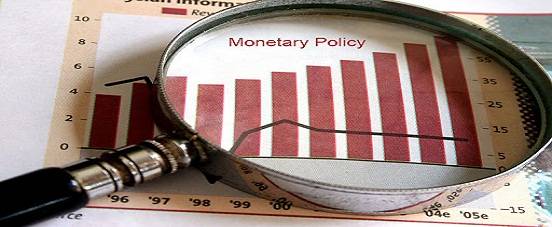To douse the inflationary fire,the recommendation by the high level RBI committee must be worked upon with urgency and earnestness.
 India’s central bank,
the Reserve Bank of India (RBI) is up with yet another concerted effort to combat
the notoriously high inflation. A committee headed by RBI Deputy Governor Urjit
Patel has recommended pegging monetary management with the Consumer Price Index
(CPI) instead of the current practice of the Wholesale Price Index (WPI). Observers
believe that the move is commendable since it is the CPI which directly affects
the consumers, unlike the WPI. The recommendation, if accepted, will line the
RBI in tune with the global central banks which target CPI as a nominal anchor.
India’s central bank,
the Reserve Bank of India (RBI) is up with yet another concerted effort to combat
the notoriously high inflation. A committee headed by RBI Deputy Governor Urjit
Patel has recommended pegging monetary management with the Consumer Price Index
(CPI) instead of the current practice of the Wholesale Price Index (WPI). Observers
believe that the move is commendable since it is the CPI which directly affects
the consumers, unlike the WPI. The recommendation, if accepted, will line the
RBI in tune with the global central banks which target CPI as a nominal anchor.
However, there are reservations
against this proposed step. Food and fuel inflation constitutes more than 50
per cent of the CPI. It is being pointed out that food and fuel price
volatility will be difficult to accommodate in the policy decisions once CPI
becomes the reference point of monetary policy. This seems a valid point.
Nevertheless, instead of taking this into account what causes frequent
variations in food and fuel prices in the first place is what one should look
at.
Let’s first discuss
the food prices. Though weather conditions have a role to play, government
policies and supply side bottlenecks are the principle protagonists in the big picture.
Without specifying how it would generate enough foodgrain to run, for instance,
the Right to Food Security programme, the government chose to go ahead and implement
it. Disregarding how it would meet the revved up demand due to increase in
rural wages by MNEREGS on the ground, it is still choosing to run it. Also, no
justification has been given as to why the Food Corporation of India (FCI)
continues to hoard massive quantities of foodgrain, much of it is often left to
rot and consumed by rats. Nor is there a grip on opportunist intermediaries
either who hoard and block the food chain supply to inflate prices for purely
vested interests driven by profit and greed. No legal action seems to follow in
these cases of organised horading. Fluctuation in onion prices late last year
is the best example of such deliberately manipulated price inflation.
Coming to fuel
prices, no government anywhere in the world can foresee fluctuation in
international crude oil prices. The internal mechanism of setting up prices
factors in such fluctuations. Unfortunately, India’s internal mechanism itself
is faulty. There is no clarity on fuel prices which have been highly subsidized
by government. Whether the benefits of subsidy reaches the needy or is enjoyed
by the consumerist rich is a chronic debate. The case of subsidising diesel for
swanky SUVs etc, is a glaring example.
That said, the food
and fuel prices fluctuate due to the non visionary approach of the government.
The failing of government should not be imputed as a hurdle on the progressive
path of treating CPI inflation as the nominal anchor.
CPI inflation stood
at 9.9 per cent in December. If it becomes the nominal anchor, it is feared
that interest rates will have to be hiked dramatically to bring it under
control. This is not something the government would like to hear at in the
current phase since all it wants is to spur growth while an apparent economic
slow-down stalks it relentlessly. It is true that the war against inflation is
fought on the cost of growth. But, before citing this inflation-growth debate
as a criticism, it is important to read the Urjit Patel committee report
in-depth. The committee recommends targeting CPI at 4 per cent within the two
years with the wiggle room of 2 per cent in either direction. It does not make
a case to raise the repo rate in the next monetary policy review. What
the RBI panel is really looking at is to bring CPI inflation down to 8 per cent
over the “next 12 months” and to 6 per cent the following year. Going by the
Patel committee’s formula, a repo rate hike is therefore not in order at least
until early 2015.
India’s Economic Affairs
Secretary Arvind Mayaram has called the focus on CPI a “premature step” but
there is a strong case for India’s monetary policy to be steered by CPI
inflation. It is this inflationary trend which really impacts domestic households
and influences their investment decisions. There has been much dispute between a
government demanding growth and ‘inflation warrior’ RBI. It is high time to
bring a decisive end to it.
Taming inflation is
important even at the cost of growth because the virtuous cycle wheeled by a
controlled inflation will spontaneously infuse growth in the economy; but the
vice versa is not possible. Therefore, the recommendation by the high level RBI
committee must be worked upon with urgency and earnestness without losing time.
No comments:
Post a Comment